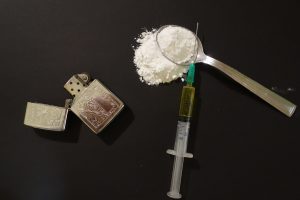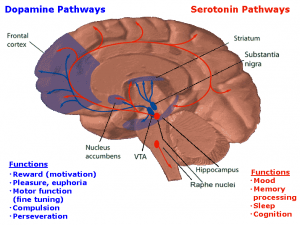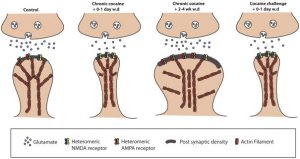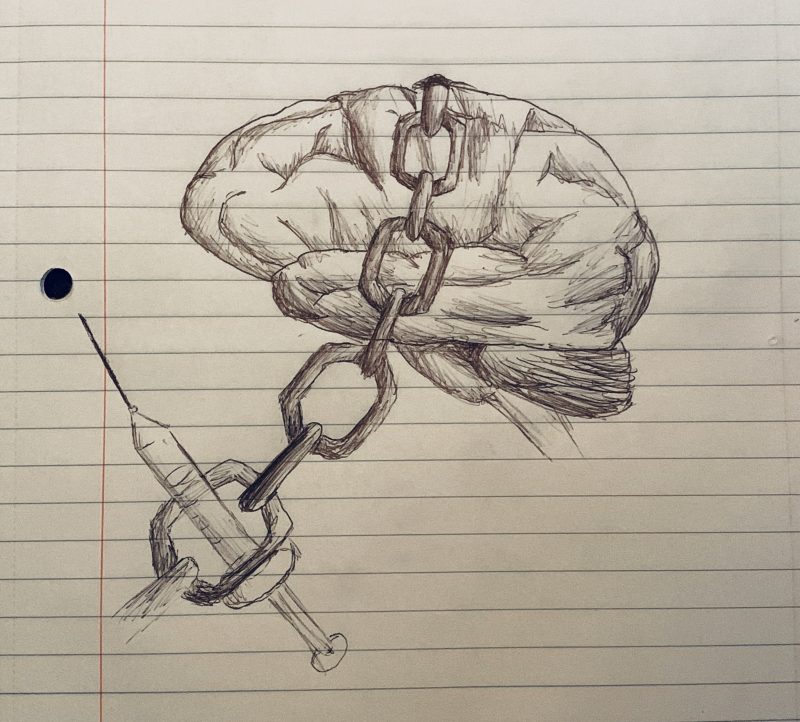We live in a world where daily news is riddled with stories of drug busts, cartel operations, and opioid overdoses. These problems are highly complex in nature, and we could talk for days about the psychology, reasoning, and socioeconomic factors that play into the whole drug trade system. Through all this complexity, however, there is one (fairly obvious) thing that binds it all together – the drugs themselves. What exactly are these mysterious substances, and why are they so valuable that thousands of people risk life and limb to obtain them for personal use, or keep them circulating around the world illegally? Down to the core, it all boils down to one controversial topic – addiction.
What is Addiction?
Let’s turn the tables for an instant. Have you ever felt you were, at some level, “addicted” to something? Perhaps chocolate, caffeine, or maybe even your cellular phone? Chances are, these things probably made you feel good in some way, which kept you coming back for more. It is quite well-known that many abusive substances and hard drugs are valued for their addictive properties and “feel-good” effects. This is a basic driving force that keeps such substances circulating throughout the modern world. The bottom line is, if people want it, then people will find a way to get it, even if obtaining the drug requires extreme measures. But what exactly is an addiction? To this day, the definition of this all-too-familiar word is still not 100% agreed upon.

A quick search on Merriam Webster will show that addiction and addictive behaviors are defined as a compulsive, chronic, need, either physiological or psychological, for something. That being said, there are two basic stances people tend to take when discussing the basis of addiction: physical and mental…
Physical – Addictive behaviors that stem from physical alteration of brain hardwiring and pathways. Someone is physically dependent on something addictive.
Mental – “Perceived” addiction. There are no physical changes in the brain, but the victim is led to believe that they need the addictive item or substance to go on.
So which is correct? The truth is, we don’t really know. While genetics and withdrawal symptoms can explain characteristics of physical addiction, questions such as “why do some people get addicted while others do not” might just play into the mental side of the hypothesis. We can broaden our knowledge, however, by studying what is already known about addiction in the brains of those who use drugs and hard substances. So what’s actually going on up there? Keep reading to find out!
Addiction is a compulsive, chronic, need, either physiological or psychological, for something.
It’s All in Your Head – Drugs and Physiology
Let’s think back to any time you’ve wanted more of something, like candy, for example. Perhaps eating one piece of candy made you feel great, and you may have reached back for another piece. Why? Humans and many other mammals have developed a system in the brain called the mesolimbic pathway. In simple terms, this pathway consists of tracts and areas of the brain that allow for feelings of pleasure or reward after doing a certain behavior, such as eating a piece of candy.

It all starts in an area of this pathway, called the Ventral Tegmental Area, or VTA. Doing a pleasurable action such as eating activates this area. Once activated, neurons from the VTA release dopamine (often credited with being the “feel good” neurotransmitter) to neurons in another part of the reward pathway, called the nucleus accumbens. When released, dopamine will hang around in the synapse (a small space between where two neurons communicate) for a short while and produce a pleasurable effect, and after a while, the neurons will take up or remove dopamine from the synapse so we don’t get carried away. Over time, neurons and neuronal connections in this learning-reward pathway can be strengthened or weakened. When learning from a behavior, the level of another neurotransmitter, glutamate, and dopamine elevate in the pathway and associated area of the brain. Through a process known as long term potentiation, neuronal connections can be strengthened, making neurons more sensitive and reactive to incoming signals. Such changes can result in reinforcing and strengthening behaviors. The video below does a good job summing up long term potentiation and the synapse:
Unfortunately, the chemical nature of this process allows for substances, such as drugs, to hijack the reward pathway and cause addiction. Often, this means increasing, in some way, the amount of dopamine in the synapse, which produces an extremely pleasurable feeling and keeps addicts reaching for more. In terms of learning, individuals associate pleasurable feelings with taking the drug, and thus the behavior is reinforced. Below are some common drugs and what they do at the synapse:
- Methamphetamine: induces increased release of dopamine and norepinephrine (a neurotransmitter that has pain-killing effects, similar to adrenaline), blocks neurons from taking up excess dopamine, and prevents dopamine from being broken down
- Opioids: inhibit the release of another neurotransmitter, called GABA. GABA is a neurotransmitter that normally decreases dopamine release
- Cocaine: prevents dopamine from being taken up by neurons, keeping it in the synapse longer and producing a prolonged feeling of reward
- That’s not to limit addiction to hard substances – anything that causes heightened dopamine release over time might become addictive (this includes sugar, caffeine, and even your cell phone!)
To make things worse, chronic use of any of these substances can cause synapses to grow (too much LTP and sensitization to drugs, producing amplified “high” feeling) and eventually shrink (to compensate for too much neurotransmitter). When synapses shrink, there are less AMPA receptors (covered in the linked article and video above), and normal amounts of dopamine are no longer enough to produce signals and thus feelings of pleasure. This means more dopamine is needed to set off the feeling of reward. This can partially explain withdrawal symptoms, and why addicts often find themselves in a vicious cycle of loading up on drugs to avoid the pain of withdrawal. Even after getting past the initial challenges of withdrawal, a single dose of drug is enough to cause relapse, as the physiological changes that occurred during addiction “primed” the brain to fall back into the cycle. Synapses might balloon to an irregular size again, similar to what happens after first exposure to a drug, which sensitizes the individual to the substance and again produces an amplified feeling of pleasure. These are the processes responsible for forming physical dependence and locking the “chains of addiction.” Is there a way out of this cycle?

Can We Treat Addiction?
For many, addiction is viewed as a hopeless state, a cycle with no end. Despite advances in pharmaceuticals and therapy, addiction is still a crisis with thousands of victims every year. The social implications of addiction not only impacts those afflicted, but also their families, friends, and relatives. It’s a cycle that keeps victims away from what they love. Addiction is also the basis behind drug-related crimes, cartels, and the opioid epidemic that we have become increasingly desensitized to over the years. We’ve seen some of the intricate molecular changes that occur with addiction, and to some extent, it is nearly impossible for the brain to get back to exactly where it was before entering an addictive state. That’s not to mention psychological addiction, which is still a mystery in itself.
So can we really treat addiction? Like many things in science, there is likely a way, but we don’t exactly know where to start looking. But by studying the synapse, we can begin to find a solution for this deadly process that quite literally, is all in the head.

That’s also not to say there are no success stories in breaking free from addiction! For more information about addiction and treatment, you can visit this page here.
